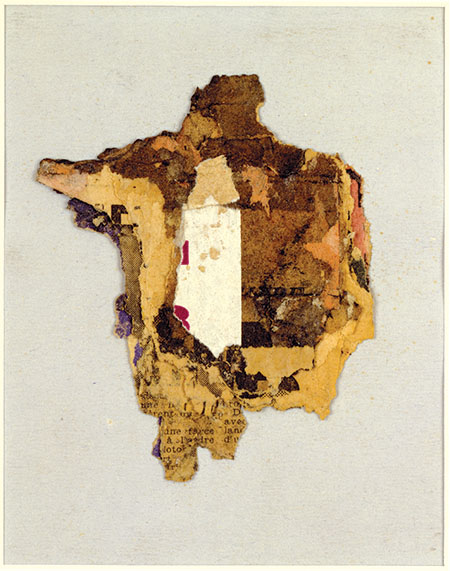herman de vries
Stedelijk Museum Schiedam, the Netherlands
Stedelijk Museum Schiedam, the Netherlands

At the age of 83, herman de vries (who stipulates that his name and the titles of his works are written in lower-case letters to ‘avoid hierarchies’) is the right man in the right place at the right time. de vries was recently selected to represent the Netherlands at the 2015 Venice Biennale and, following his inclusion in group exhibitions at the Stedelijk Museum Schiedam in 2011 and this year at the Guggenheim in New York, he currently has a solo show, again at the Stedelijk, which has garnered extensive praise from the Dutch media. This retrospective, simply entitled ‘all’, spans 50 years of the artist’s work and includes several in situ installations in Schiedam’s city park and at another local art gallery.
As a member of Zero – a transnational network of like-minded artists active from 1957 to 1966 – as well as a practicing Buddhist, de vries has been making artworks closely related to nature for decades. At a time when the value of art is increasingly debated in the context of ecological and ideological crises, de vries’s oeuvre appears particularly prescient. The retrospective begins with works dating back to 1956, including the paper fragment what is rubbish?, one of de vries’s ‘collages trouvés’, reminiscent of Kurt Schwitters’s ‘MERZbilder’ from the 1920s: collages that brought found-paper elements into the realm of art. The show also contains examples of de vries’s classic Zero work, such as the monochrome wit schilderij (white painting, 1960), which a Dutch art critic at the time described as ‘emptiness times four’.
The rigour with which de vries pursued these monochrome works as a member of Zero suggested he would not stray from the group’s dogma of ‘pure objectivity’. But, in 1975, nature began to work its way into de vries’s practice. The fallen leaves collected on paper in 1, 2 en 3 uur onder mijn appelboom (1, 2, 3 hours below my apple tree, 1975), marked the beginning of his use of chance and change as leitmotifs. Scientific methodologies also moved to the foreground as evidenced, for example, in die steine (stones, 1996–2009), a work in which 12 different found stones are placed on wooden pedestals in the manner of a scholarly presentation.

In the attic of the Stedelijk, de vries created an even larger frame for nature’s relationship to culture. Here, the installation natural relations (artefacts) (1989) comprises a white rectangular plate displaying a selection of herbs that can be used as food, medicine or hallucinogens – which de vries collected from shops in the Nepalese cities of Bhaktapur and Kathmandu – presented like paint pigments. A four-part installation consisting of dried plants on paper (monumenta lamiae, 1985) represents nature at the opposite extreme by showing poisonous specimens that can be deadly. In contrast to de vries’s more muted Zero works, both these pieces suggest the possibility of a narrative.
In the park next to the museum, which is located in the centre of Schiedam, an industrial town known for manufacturing gin, de vries installed three new works: large rocks placed along a trail, each engraved with a text reading either ‘i am’, ‘this’ or ‘no thing’ – a humble, existential meditation. In de vries’s view, man is made of particles and could just as easily have been created as a rock. At the end of this trail, de vries devised a response to the natural origins of gin production at De Ketelfactory, an art gallery next door to one of Schiedam’s distilleries. Inside, among other works, a white square plate is topped with deep-purple juniper berries (installation with juniper berries, 2014). On the white wall, tracks of charred wood are visible from where the artist rubbed and dragged them during a performance staged before the opening night (17-09-2014, 2014).
While de vries’s initial interest in the natural world was filtered through Zero’s ideas of representing reality objectively and scientifically, this retrospective shows how, over the years, a narrative has subtly unfolded, revealing a more biographical take on the artist’s relationship with nature and how he navigates it. Walking through the exhibition, it felt like ‘all’ was a preface of what is yet to come in Venice, for which de vries is preparing a new piece. Even though looking back at 50 years of work might suggest a form of closure, here, it was impossible to escape the feeling of a new beginning.
























